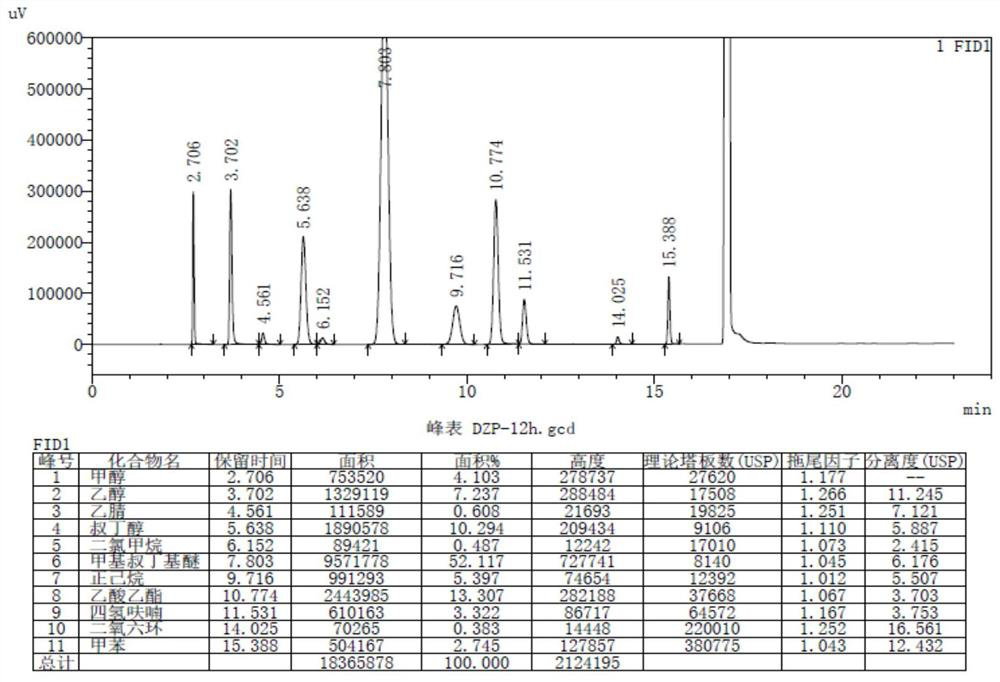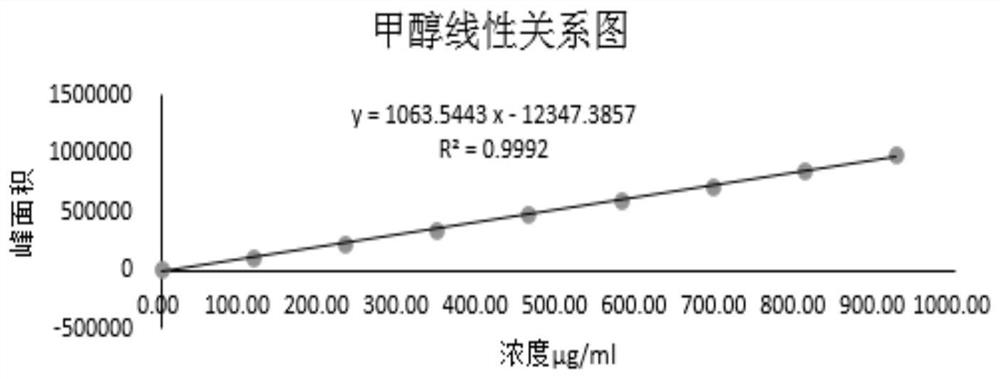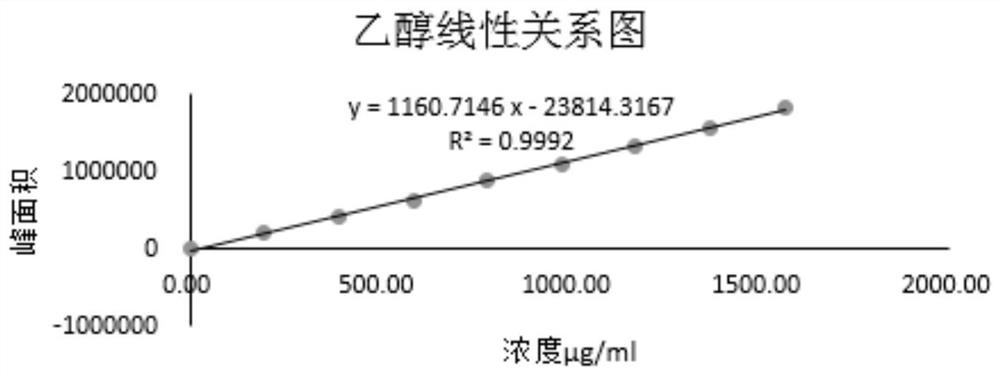Method for simultaneously detecting multiple residual solvents in sitafloxacin
A technology for residual solvents and sitafloxacin, which is applied in the field of analytical chemistry, can solve the problem that multiple residual solvents of sitafloxacin cannot be detected at the same time, and achieve the effects of saving manpower and material resources, reducing interference, and improving detection efficiency
- Summary
- Abstract
- Description
- Claims
- Application Information
AI Technical Summary
Problems solved by technology
Method used
Image
Examples
Embodiment
[0101] Example: Simultaneous detection of 11 residual solvents in sitafloxacin.
[0102] 1. Instruments and reagents:
[0103] Gas spectrometer: GC-2010Pro gas chromatograph, produced by Shimadzu Corporation of Japan;
[0104] Headspace sampler: HS-20 type headspace sampler, produced by Shimadzu Corporation of Japan;
[0105] Drug: sitafloxacin (batch number: 1811013), produced by Jichuan Pharmaceutical Group Co., Ltd.;
[0106] Solvent: N,N-dimethylacetamide (DMAC), GC grade, produced by CNW Technology Co., Ltd., Germany.
[0107] Reference substances: methanol, acetonitrile, tert-butanol, dichloromethane, methyl tert-butyl ether, n-hexane, ethyl acetate, tetrahydrofuran and dioxane, GC grade, all produced by Shanghai Aladdin Biochemical Technology Co., Ltd. ; Ethanol, GC grade, produced by West Asia Chemical Technology (Shandong) Co., Ltd.; Toluene, GC grade, produced by TEDIA Co., Ltd. of the United States.
[0108] 2. Chromatographic conditions:
[0109] In this embod...
PUM
 Login to View More
Login to View More Abstract
Description
Claims
Application Information
 Login to View More
Login to View More - R&D
- Intellectual Property
- Life Sciences
- Materials
- Tech Scout
- Unparalleled Data Quality
- Higher Quality Content
- 60% Fewer Hallucinations
Browse by: Latest US Patents, China's latest patents, Technical Efficacy Thesaurus, Application Domain, Technology Topic, Popular Technical Reports.
© 2025 PatSnap. All rights reserved.Legal|Privacy policy|Modern Slavery Act Transparency Statement|Sitemap|About US| Contact US: help@patsnap.com



